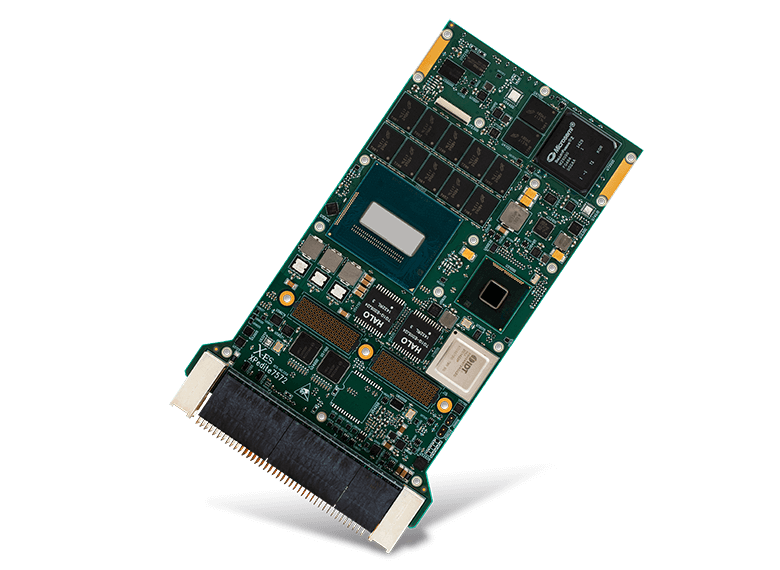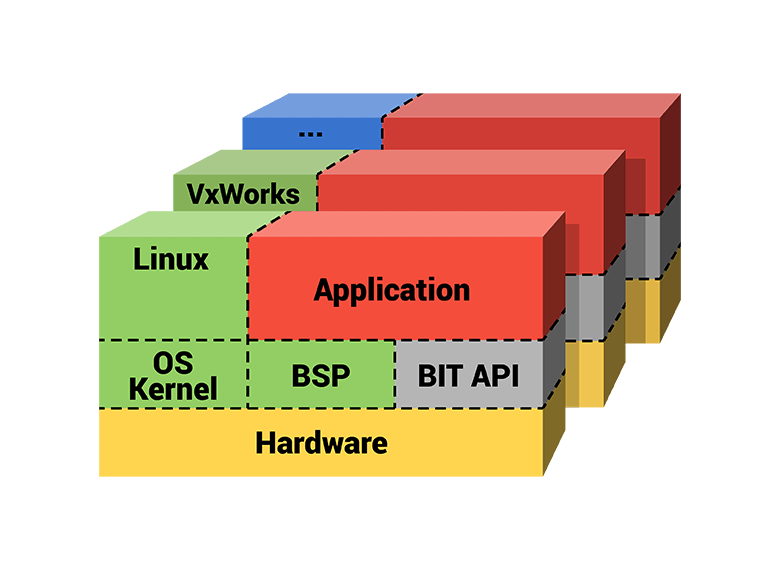Built-In Test (BIT)
Support for Diagnostic Test Routines
X-ES Built-In Test (BIT) is an extensive suite of test routines with exceptional coverage to ensure confidence in the health of your system. BIT provides an exemplary Application Programming Interface (API) for all supported operating systems and architectures, making integration fast and easy. BIT is supported on most X-ES processor boards.

Test Routines
BIT supports diagnostic tests routines at three levels, each highly configurable and provided with detailed coverage analysis. Potential applications for these routines include FDFI coverage during deployment, qualification testing, manufacturing reliability testing, and more.
BIT routines are provided as a static library, thoroughly documented API, and detailed examples.
Power-On BIT (PBIT)
PBIT consists of low-level tests executed by the boot firmware or during the operating system boot process. PBIT is supported on select products; contact X-ES for details.
The results of PBIT tests are stored in memory and are available to applications using the BIT API. PBIT tests are highly configurable and can be individually disabled for Fast Boot, enabled for in-depth testing, or customized for your specific needs.
Example PBIT tests include temperature sensor and device presence checks.
![]()
![]()
Continuous BIT (CBIT)
CBIT test routines are executed from within an application and are designed to be called periodically during normal operation. CBIT routines execute non-invasive tests which are designed to finish quickly and use few resources.
Automatic configuration routines provide resource discovery and test configuration for dynamic operation out-of-the-box. The BIT example application includes the full source code for an application task to run all CBIT and IBIT tests, making integration and customization smooth.
Example CBIT tests include ECC status and device presence checks.
Initiated BIT (IBIT)
IBIT test routines are executed at any time from the application and consist of destructive/non-destructive and resource-intensive tests.
IBIT routines are designed to help pinpoint the origin of system failures by executing extensive tests of individual devices and functions.
The example application includes examples of customizing tests for your specific needs. Example IBIT tests include Ethernet PHY loopback and BIOS CRC tests.
![]()
IPMI
BIT supports Intelligent Platform Management Interface (IPMI) integration on supported products, available as CBIT/IBIT tests and API functions. BIT IPMI tests are a quick and easy way to check the health of each component in your system, and the BIT API provides a fully-featured interface to both the on-board and system-wide IPMI controllers.
Automatic discovery of on-board and system-wide IPMI resources is demonstrated in the example application, giving you a head-start in testing and deployment. Third-party IPMI modules are supported by default and further customization can be added with minimal effort.
The comprehensive IPMI API simplifies the complex interaction with the IPMI subsystem and makes debugging a breeze. BIT with IPMI is an invaluable tool when evaluating system health.

BIT Application Programming Interface (API)
The BIT Application Programming Interface (API) provides a common interface for BIT routines, operating system calls, and hardware access. The BIT API is consistent across all X-ES processor boards, architectures, and operating systems.
For example, the same BIT API is available for an Intel®-based product running X-ES Enterprise Linux (XEL) and a Freescale®-based product running Wind River VxWorks. This high degree of uniformity means you need fewer customizations in your system, and integrating BIT into your application is consistent and straightforward.
The example application serves as the living documentation for the API in addition to formal reference documentation.
Example Application
BIT is provided with an exhaustive example console application which exercises the underlying BIT API. The application is written in ANSI C and includes full source code and documentation. The application is provided ready-to-run to help accelerate software development and deployment. A fully-featured auto-configuration routine demonstrates automatic resource discovery and test configuration for dynamic BIT operation.
Coverage
BIT is provided with detailed test coverage analysis. Additional FDFI (Fault Detection and Fault Isolation) analysis reports are available upon request. Please contact X-ES support for more information.
Flexibility
Whether your goals are Fault Detection and Fault Isolation (FDFI) coverage during deployment, qualification testing, manufacturing reliability or more, X-ES can work with you to deliver the BIT capabilities your project needs. For more BIT information, please see the BIT Product Brief or contact X-ES support.